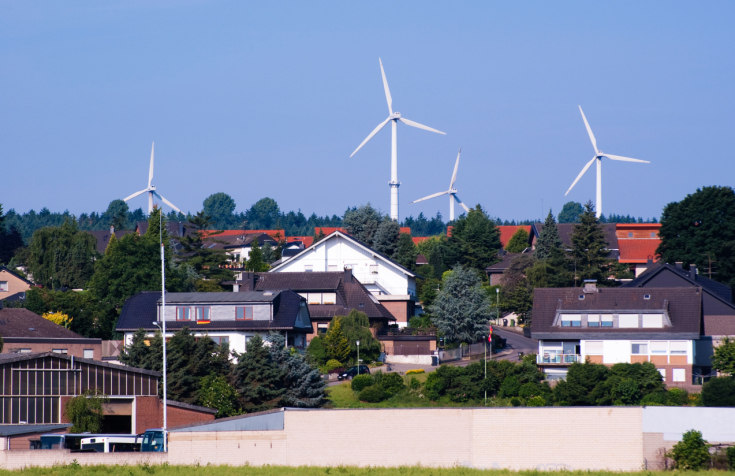Ohio Governor Mike DeWine signed Senate Bill 52 into law, allowing county commissioners to reject or place limits on siting of specific wind or solar industrial developments.
Under the new law, developers of wind and solar projects must notify county commissioners and trustees at least 90 days before filing an application with the state power siting board. The law also adds a commissioner and trustee from the area of a proposed development to the board while it reviews the local project.
Disproportionate Rural Impact
The bill had broad support in counties in which large solar and wind facility developments had angered residents, such as the proposed 200 Megawatt, 24,000 acre Republic Wind development proposed by APEX Clean Energy, which was rejected by the Ohio Power Siting Board in late June, following years of contentious debate.
Urban and suburban residents want wind power, but want rural residents to bear the negative health, safety, and property value effects they impose, said Ohio state Rep. Bill Seitz (R-Green Township), speaking on the House floor in support of the bill.
“They think it’s just fine to put these monstrosities all over rural Ohio, to ruin the landscape in rural Ohio, to create 600-foot-tall structures with moving parts where the blades break and the fires start, and the birds and bats are chopped to smithereens,” Seitz said.
Health and Environmental Concerns
A lack of proper, consistent rules and regulations at the state level coupled with significant potential adverse health effects and environmental harms indicate a need for local people to have a strong say about wind and solar siting decisions, says John Droz, a physicist and director of the Alliance for Wise Energy Decisions.
“Numerous studies have concluded there can be serious human health effects to people living within a mile of an industrial wind facility, with infrasound generated by the wind turbines being a major concern,” Droz said. “Wind energy can also cause serious environmental harm: like adverse hydrogeological impacts, destroying ecosystems, and killing wildlife.
“Wind power can reduce crop yields within 10 miles of a development because they kill bats which serve both to pollinate crops and that consume crop eating insects,” Droz said. “Wind turbines also take prime farmland out of production, resulting in lost jobs, fewer farm supplies and equipment being sold, and reduced food for consumption.”
Droz noted other economic reasons that may drive citizens to reject wind farms, as well.
“Studies suggest wind farms reduce the property values of home within two miles of a large wind development,” said Droz. “Wind projects require 100 percent backup, which is typically from natural gas, and this should be factored in when discussing costs, environmental impacts, and supposed benefits from reducing carbon dioxide emissions.
“This effectively means that consumers pay for energy sources twice,” said Droz. “When a comprehensive and objective financial analysis is done, wind is three or more times the cost of conventional electrical energy sources.”
The new law takes effect 90 days after its July 12 signing date.
Kevin Stone (kevin.s.stone@gmail.com) writes from Arlington, Texas.
Legislative Connection
Ohio state Rep. Bill Seitz (R-Green Township): https://ohiohouse.gov/members/bill-seitz; https://ohiohouse.gov/members/bill-seitz/contact
